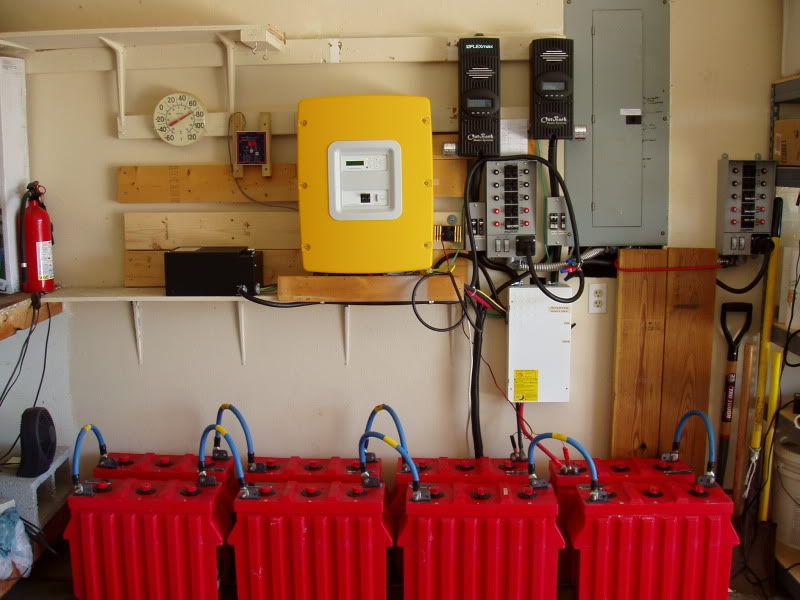Also, consider that he purchased a battery charger, which depending on the model might have only been $50. or might have been into the $100's. That's more money that will be tossed out later as his system expands. That money could have been put towards an inverter that actually DID that function also.
You gotta ALWAYS consider growth of the system.
I ALMOST hedged myself in on my system here not to long ago. I was planning on doing some "structural strengthing" of the area near my battery bank. We've lived with 20 batteries for almost a decade. However, in the last year we added 10 more KC130's to our system, increasing power input by 1,300 watts. Thirty minutes after sun starts hitting everything the batteries are maxed out now. Needless to say I'm probably going to expand our bank to 24 batteries at some point in the future. Had I made that "structural strengthening" little modification to that area, expanding the battery bank would not be an option now- we would be hemmed in at 20 batteries.
ALWAYS think about growth and plan for it, even if it takes a decade- which it has in my case!!!
You gotta ALWAYS consider growth of the system.
I ALMOST hedged myself in on my system here not to long ago. I was planning on doing some "structural strengthing" of the area near my battery bank. We've lived with 20 batteries for almost a decade. However, in the last year we added 10 more KC130's to our system, increasing power input by 1,300 watts. Thirty minutes after sun starts hitting everything the batteries are maxed out now. Needless to say I'm probably going to expand our bank to 24 batteries at some point in the future. Had I made that "structural strengthening" little modification to that area, expanding the battery bank would not be an option now- we would be hemmed in at 20 batteries.
ALWAYS think about growth and plan for it, even if it takes a decade- which it has in my case!!!


Comment